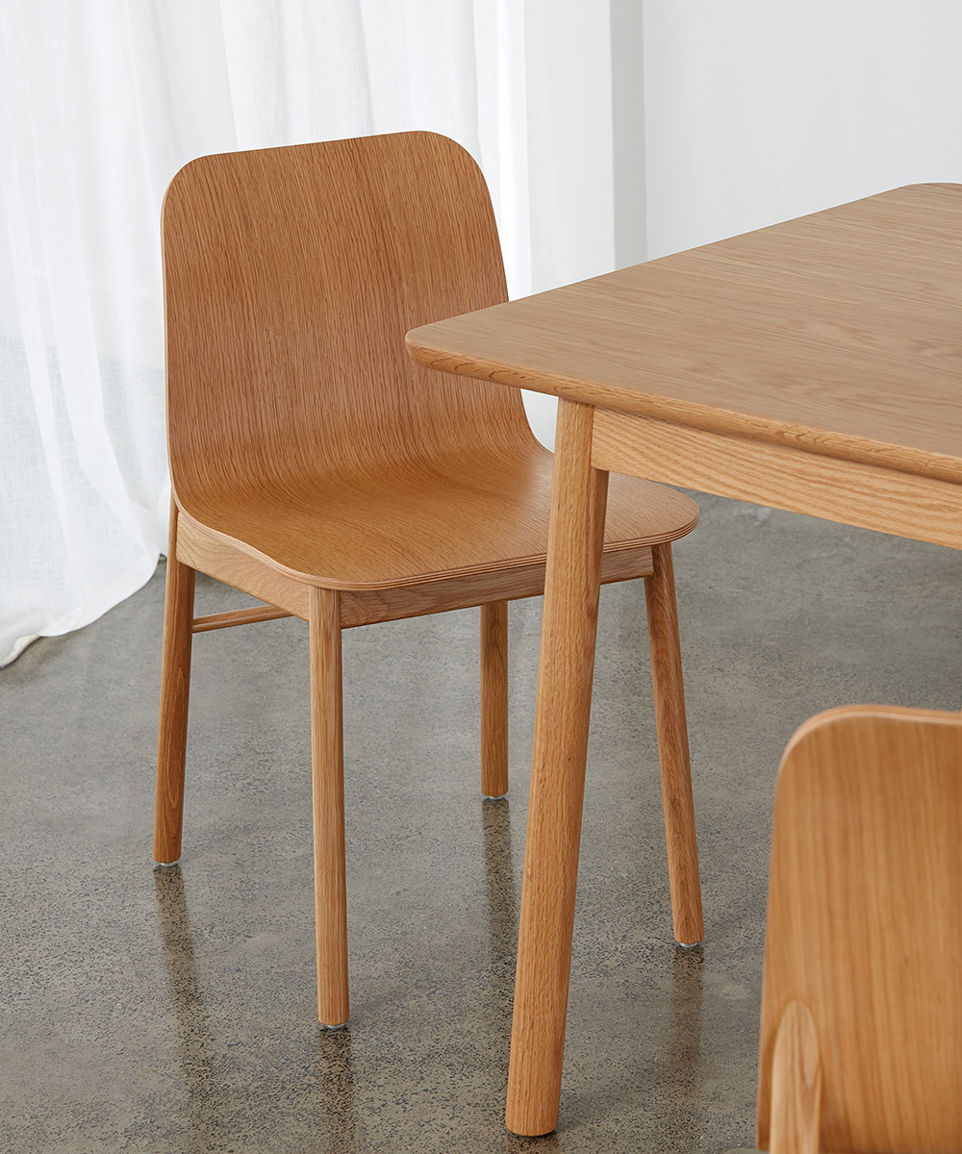




Solid Wood

We prioritise the use of timber certified by the Forest Stewardship Council (FSC®)
Solid wood is a term most commonly used to distinguish between ordinary lumber and engineered wood, like plywood, MDF, and particle board.
It is strong, durable, and comes in different species and grades. It is important to consider the unique properties of solid wood when choosing a furniture piece.
Solid timber is ideal for high-impact areas such as tables. It is durable and can be sanded back if damaged or scratched to restore it.
Wood is a natural, living material that responds to its environment. It can be affected by light, temperature, humidity, and wear.
Caring for Solid Wood
We do not recommend placing solid wood furniture in direct sunlight or near sources of heat. The natural characteristics of wood cause it to expand and contract with changes in humidity. Placing your furniture in these environments for prolonged periods of time may cause the timber to dry out, shrink, crack, or fade.
Avoid moisture and do not place in damp environments. Wipe away spills immediately. Use placemats or coasters to avoid staining.
Wooden pieces can lighten over time with light exposure. Avoid leaving the piece in the same location for an extended period. Move regularly to ensure an even finish over time.
Avoid using harsh chemicals or abrasive cleaners to clean the surface. This can strip or damage the coating.
Combat oil build-up on surfaces by wiping down with a soft, microfiber cloth.
Avoid dragging or knocking heavy objects against the surface.
Discover the Difference: Veneer & Solid Wood
Both types of materials and production techniques have been used for centuries. A common misconception is solid wood furniture is of better quality than veneered pieces.
Each material has its advantages and disadvantages—in terms of practicality, functionality, and longevity, as well as appearance. Several factors are considered when choosing to use solid or veneer wood such as how the piece of furniture has been designed and its intended use. Often, a combination of materials works best.
Read about our veneer wood features to learn more.
FSC® Certification
In recent times, we have made the shift to using FSC®-certified wood across our furniture pieces. The Forest Stewardship Council (or FSC®) is an international, non-profit organisation that sets standards to ensure forestry is practised in an environmentally responsible and socially beneficial way.
FSC® helps to protect forests from deforestation and therefore the animals and ecosystems within. By using FSC®-certified material, we know the wood in our furniture comes from well-managed forests and originates from sustainable and legal sources. It also ensures the people who work within the entire supply chain are treated fairly and ethically.
American White Oak
American white oak is a medium hardwood with consistent colouring and an attractive grain. It is known for its strength and durability.
At Città, we use both solid oak and oak veneer. Each piece is either finished with a clear, matte PU-lacquer or painted in a solid colour with the natural grain depth visible.
American Walnut
American walnut is a tough hardwood of medium density. It has a fine, open grain that is generally straight, although it can be irregular. Colour can vary—even across the same board—from lighter sapwood to deep chocolate-brown heartwood.
Città furniture uses both solid walnut and walnut veneer. Each piece is either finished with a clear, matte PU-lacquer or painted in a solid colour with the natural grain depth visible.
